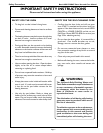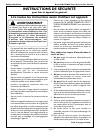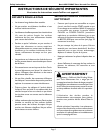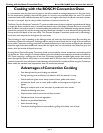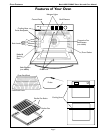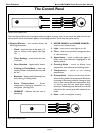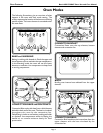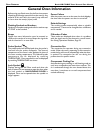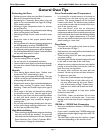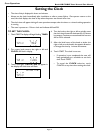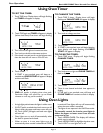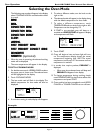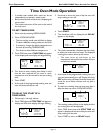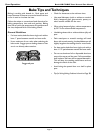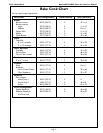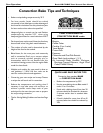
Bosch HBL7
/
HBN7 Oven Use and Care Manual
Oven Operations
Page 11
Preheating the Oven
• Preheat the oven when using the Bake, Convection
Bake and Convection Roast modes.
• Preheating for Convection Roast when using the
probe is not recommended. See Pages 20 through
22 for details and tips.
• Selecting a higher temperature does not shorten
the preheat time.
• Preheating is necessary for good results when baking
cakes, cookies, pastry and breads.
• Preheating will help to sear roasts and seal in meat
juices.
• Place oven racks in their proper position before
preheating.
• During preheat, the selected cooking temperature
can be displayed by touching TEMPERATURE.
• A beep will confirm that the oven is preheated and
the selected cooking temperature will be displayed.
• Fast Preheat Bake and Fast Preheat Convection Bake
can be used when time is crucial.
Operational Suggestions
• Use the cooking charts as a guide.
• Do not set pans on the opened oven door.
• Use the interior oven light to view the food through
the oven door window rather than opening the door
frequently.
Utensils
• Glass baking dishes absorb heat. Reduce oven
temperature 25°F when baking in glass.
• Use pans that give the desired browning. The type
of finish on the pan will help determine the amount
of browning that will occur.
• Shiny, smooth metal or light nonstick/anodized pans
reflect heat, resulting in lighter, more delicate
browning. Cakes and cookies require this type of
utensil.
• Dark, rough or dull pans will absorb heat resulting
in a browner, crisper crust. Use this type for pies.
• For brown, crisp crusts, use dark nonstick/anodized
or dark, dull metal utensils or glass bakeware.
Insulated baking pans may increase the length of
cooking time.
• Do not cook with the empty broiler pan in the oven,
as this could change cooking performance. Store
the broil pan outside of the oven.
High Altitude Baking
• When cooking at high altitude, recipes and cooking
time will vary from the standard. For accurate
information, write the Extension Service, Colorado
State University, Fort Collins, Colorado 80521.
There may be a charge for the bulletins.
General Oven Tips
Oven Condensation and Temperature
• It is normal for a certain amount of moisture to
evaporate from the food during any cooking
process. The amount depends on the moisture
content of the food. The moisture may condense
on any surface cooler than the inside of the oven,
such as the control panel.
• Your new Bosch oven has an electronic
temperature sensor that accurately maintains the
temperature selected. Your previous oven may have
had a mechanical thermostat that drifted gradually
over time to a higher temperature. It is normal
that you may need to adjust your favorite recipes
when cooking in a new oven.
Oven Racks
• The oven has rack guides at four levels as shown
in the illustration on Page 7.
• Rack positions are numbered from the bottom rack
guide (#1) to the top (#4).
• Check cooking charts for best rack positions to
use when cooking.
• Each level guide consists of paired supports formed
in the walls on each side of the oven cavity.
• Always be sure to position the oven racks before
turning on the oven. Make sure that the racks are
level once they are in position.
• To remove oven rack from the oven, pull rack
forward, lift rack up at front and then remove it.
• To replace an oven rack:
1. Place rear of rack between rack level guides.
2. While lifting front of rack, slide rack in all
the way while lowering the front. Please
refer to illustration on Page 7 if there is any
question as to which side is the front of the
rack.
• The racks are designed to stop when pulled
forward to their limit.
• CAUTION! Never use aluminum foil to cover
the oven racks or to line the oven. It can cause
damage to the oven liner if heat is trapped under
the foil.
120/240 vs. 120/208 Volt Connection
• Most oven installations will have a 120/240 voltage
connection.
• If your oven is installed with 120/208 voltage, the
preheat time may be slightly longer than with 120/
240 voltage.
• The Self-Clean mode may also require a longer
clean time, depending on the amount of soil.



